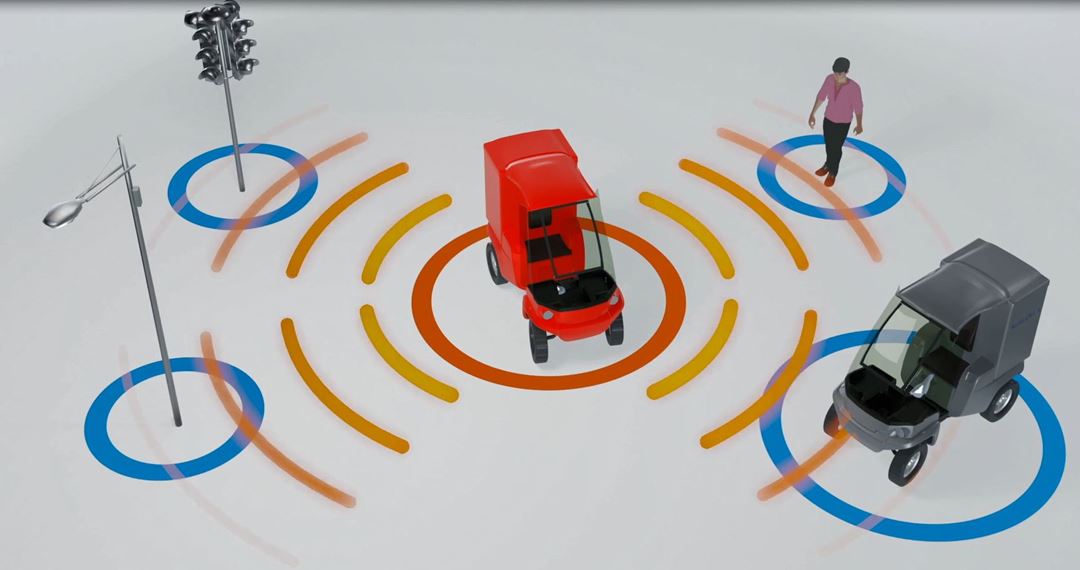The heterogenous V2X communication platform pilot site demonstrated the deployment of advanced electronic systems in use-case scenarios for supporting safe fail-operational functions covering both V2V and V2I communication.
These scenarios are vulnerable road users warning (VRUW), intersection movement assist (IMA), green light speed advice/time to green (GLOSA/TTG), emergency electronic brake light (EEBL), forward collision warning (FCW), blind-spot warning (BSW), and lane change assistant (LCA).
In addition, the vulnerable road users (VRUs) warning scenario transmits a warning via V2I communication RSU-enabled lighting poles to the OBU of the host vehicle when VRUs, such as pedestrians or animals, are on the road.
The VRUs are detected by a radar that communicates with the RSU, and the streetlights during the night are automatically activated as soon as vehicles and/or VRUs are detected in the area.

